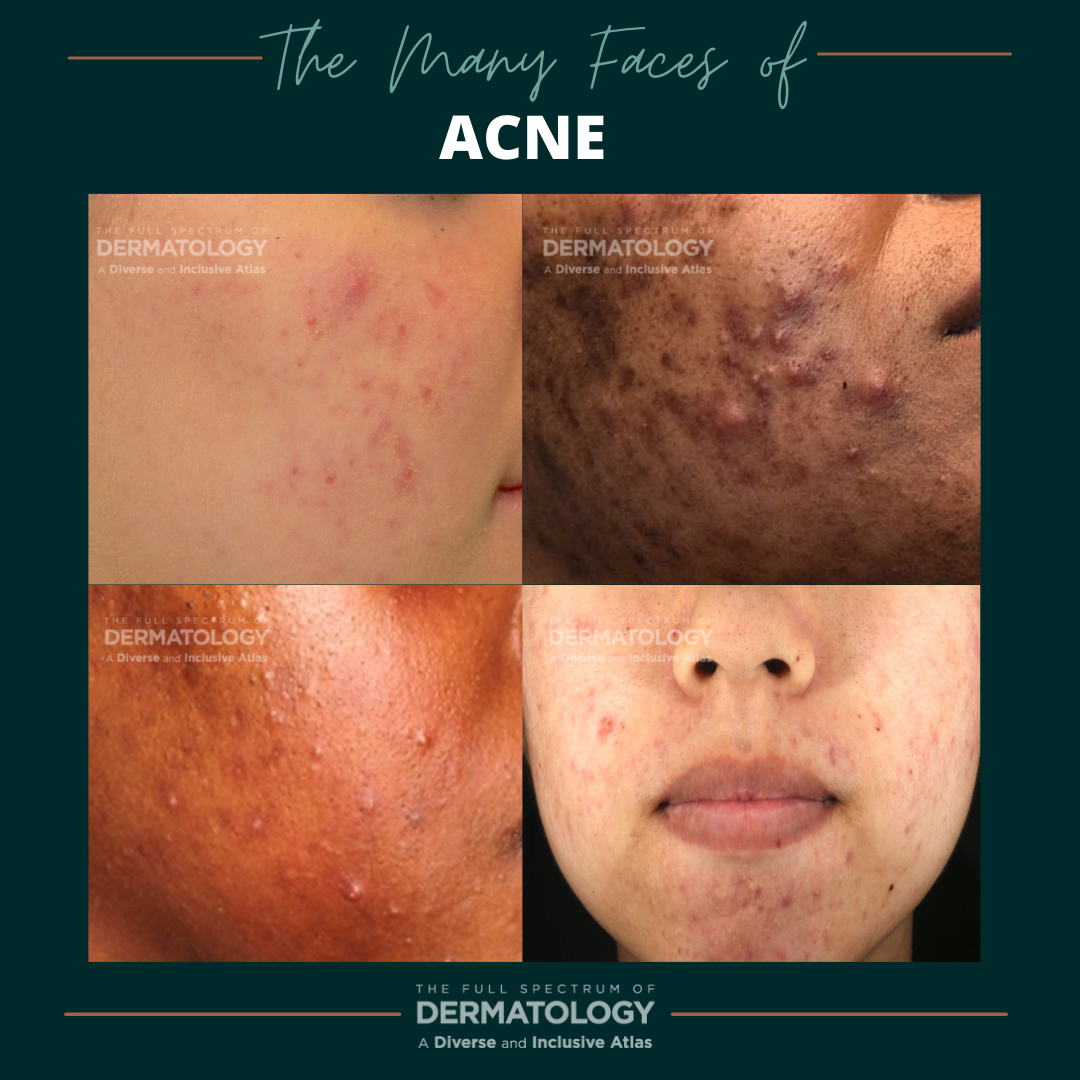Our new series, “The Many Faces of”, showcases side-by-side images of some of the most commonly seen dermatology conditions in an array of skin tones and briefly highlight nuances in clinical presentation. All images featured in the series are part of The Full Spectrum of Dermatology: A Diverse and Inclusive Atlas, a resource developed by co-editors Misty Eleryan, MD, MS, and Adam Friedman, MD, and published by SanovaWorks and Educational Testing & Assessment Systems.
We continue our series with a look at acne. June is National Acne Awareness Month. Acne is the most common skin condition in the United States and affects up to 50 million Americans each year. It affects both younger and older individuals and can affect both physical and mental health; therefore it’s important to address and treat as early as possible to minimize long term effects, including scarring, while also improving patients’ overall quality of life.
Acne is a multifactorial disease, which is impacted by excess sebum production, plugging of the follicular units, and the presence of C. acnes bacteria which leads to inflammation and formation of acne lesions. Acne is often separated into two categories, inflammatory and comedonal, based on the appearance and symptoms of lesions. Treatments are aimed at reducing the presence of bacteria in the skin, decreasing sebum production, and decreasing plugging of follicular units. Hormonal influence, specifically testosterone, can also play a role in the development of acne, and can also be a target for treatment options.

Nuances to Highlight
One of the key characteristics of acne is post-inflammatory hyperpigmentation that is often most noticeable and of most concern in patients with darker skin tones. In lighter skin tones, hyperpigmentation may appear more pink in contrast to a dark brown appearance as the skin tone deepens. It is also important to point out that keloidal or hypertrophic scarring may result and should be considered when treating patients. Treatment should first aim to decrease/stop acne production; however, addressing the residual post-inflammatory hyperpigmentation/scarring should also be an important issue that is addressed as this is often the main concern for patients with darker skin tones.

Further Reading
If you would like to learn more about diagnosing and treating acne, check out the following article: https://nextstepsinderm.com/derm-topics/acne-vulgaris-nuances-in-the-approach-to-treatment-in-patients-with-darker-skin-tones/
Acknowledgements
We thank co-editors Misty Eleryan, MD, MS, and Adam Friedman, MD for reviewing the content of this article.
Reference
Eleryan, Misty, and Adam Friedman. The Full Spectrum of Dermatology: A Diverse and Inclusive Atlas. SanovaWorks, 2021.
NOW AVAILABLE! Visit the online image gallery for The Full Spectrum of Dermatology: A Diverse and Inclusive Atlas, where you will find high-quality images that you will be able to use, free of charge, for non-commercial educational purposes. Access the online gallery here.
The Full Spectrum of Dermatology: A Diverse and Inclusive Atlas DIGITAL EDITION is available for purchase here.
Did you enjoy this article? You can find more here.

